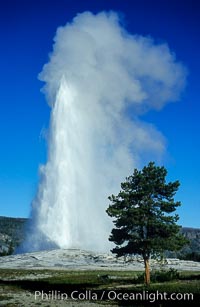
Old Faithful geyser, peak eruption.
Location: Upper Geyser Basin, Yellowstone National Park, Wyoming
Image ID: 07179
Location: Upper Geyser Basin, Yellowstone National Park, Wyoming
Image ID: 07179
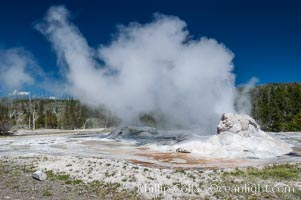
Grotto Geyser, Yellowstone National Park.
Location: Upper Geyser Basin, Yellowstone National Park, Wyoming
Image ID: 07204
Location: Upper Geyser Basin, Yellowstone National Park, Wyoming
Image ID: 07204
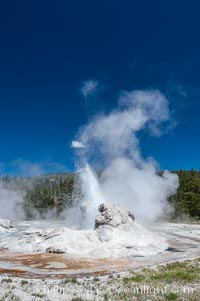
Grotto Geyser, Yellowstone National Park.
Location: Upper Geyser Basin, Yellowstone National Park, Wyoming
Image ID: 07206
Location: Upper Geyser Basin, Yellowstone National Park, Wyoming
Image ID: 07206
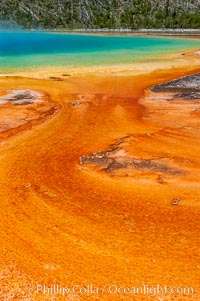
Grand Prismatic Spring displays brilliant colors along its edges, created by species of thermophilac (heat-loving) bacteria that thrive in narrow temperature ranges. The outer orange and red regions are the coolest water in the spring, where the overflow runs off.
Location: Midway Geyser Basin, Yellowstone National Park, Wyoming
Image ID: 07264
Location: Midway Geyser Basin, Yellowstone National Park, Wyoming
Image ID: 07264
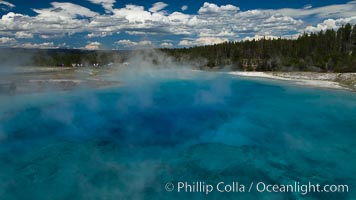
Excelsior Geyser, now dormant, was formerly the worlds largest geyser. It still produces immense runoff into the Firehole River: 4,500 gallons per minute, or 6 million gallons per day. It is located in Midway Geyser Basin.
Location: Midway Geyser Basin, Yellowstone National Park, Wyoming
Image ID: 26953
Location: Midway Geyser Basin, Yellowstone National Park, Wyoming
Image ID: 26953
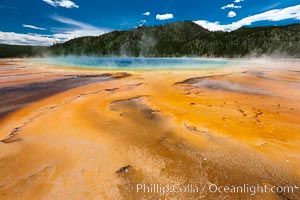
Bacteria mats and Grand Prismatic Spring. The orange color is due to bacteria which thrive only on the cooler fringes of the hot spring, while the hotter center of the spring hosts blue-colored bacteria.
Location: Midway Geyser Basin, Yellowstone National Park, Wyoming
Image ID: 26954
Location: Midway Geyser Basin, Yellowstone National Park, Wyoming
Image ID: 26954
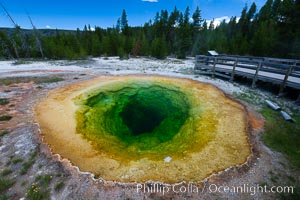
Morning Glory Pool, has long been considered a must-see site in Yellowstone. At one time a road brought visitors to its brink. Over the years they threw coins, bottles and trash in the pool, reducing its flow and causing the red and orange bacteria to creep in from its edge, replacing the blue bacteria that thrive in the hotter water at the center of the pool. The pool is now accessed only by a foot path.
Location: Upper Geyser Basin, Yellowstone National Park, Wyoming
Image ID: 26955
Location: Upper Geyser Basin, Yellowstone National Park, Wyoming
Image ID: 26955
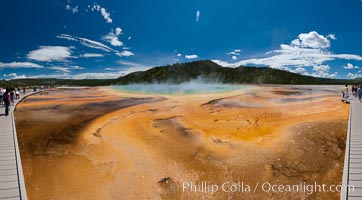
Bacteria mats and Grand Prismatic Spring. The orange color is due to bacteria which thrive only on the cooler fringes of the hot spring, while the hotter center of the spring hosts blue-colored bacteria.
Location: Midway Geyser Basin, Yellowstone National Park, Wyoming
Image ID: 26958
Panorama dimensions: 4624 x 8376
Location: Midway Geyser Basin, Yellowstone National Park, Wyoming
Image ID: 26958
Panorama dimensions: 4624 x 8376
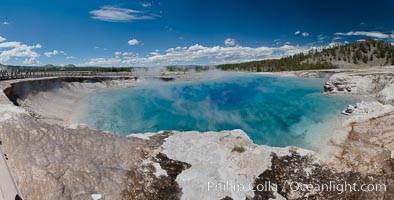
Panorama of Excelsior Geyser, now dormant, was formerly the worlds largest geyser. It still produces immense runoff into the Firehole River: 4,500 gallons per minute, or 6 million gallons per day. It is located in Midway Geyser Basin.
Location: Midway Geyser Basin, Yellowstone National Park, Wyoming
Image ID: 26959
Panorama dimensions: 5188 x 10216
Location: Midway Geyser Basin, Yellowstone National Park, Wyoming
Image ID: 26959
Panorama dimensions: 5188 x 10216
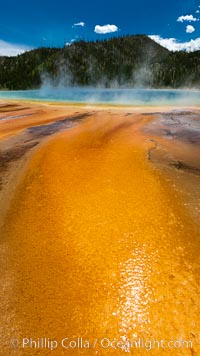
Bacteria mats and Grand Prismatic Spring. The orange color is due to bacteria which thrive only on the cooler fringes of the hot spring, while the hotter center of the spring hosts blue-colored bacteria.
Location: Midway Geyser Basin, Yellowstone National Park, Wyoming
Image ID: 26964
Location: Midway Geyser Basin, Yellowstone National Park, Wyoming
Image ID: 26964
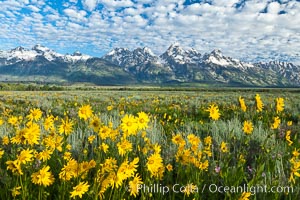
Teton Range and Antelope Flat wildflowers, sunrise, clouds.
Location: Grand Teton National Park, Wyoming
Image ID: 26929
Location: Grand Teton National Park, Wyoming
Image ID: 26929
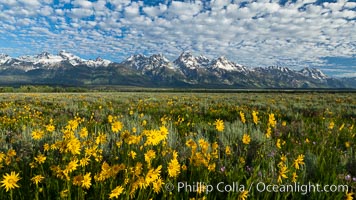
Teton Range and Antelope Flat wildflowers, sunrise, clouds.
Location: Grand Teton National Park, Wyoming
Image ID: 26936
Location: Grand Teton National Park, Wyoming
Image ID: 26936
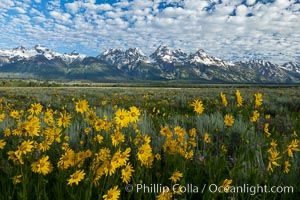
Teton Range and Antelope Flat wildflowers, sunrise, clouds.
Location: Grand Teton National Park, Wyoming
Image ID: 26937
Location: Grand Teton National Park, Wyoming
Image ID: 26937
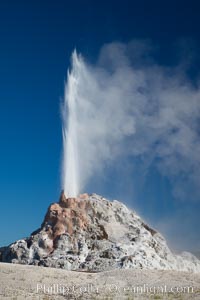
White Dome Geyser, rises to a height of 30 feet or more, and typically erupts with an interval of 15 to 30 minutes. It is located along Firehole Lake Drive.
Location: Lower Geyser Basin, Yellowstone National Park, Wyoming
Image ID: 26938
Location: Lower Geyser Basin, Yellowstone National Park, Wyoming
Image ID: 26938
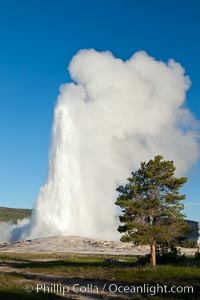
Old Faithful geyser, sunrise. Reaching up to 185' in height and lasting up to 5 minutes, Old Faithful geyser is the most famous geyser in the world and the first geyser in Yellowstone to be named.
Location: Upper Geyser Basin, Yellowstone National Park, Wyoming
Image ID: 26940
Location: Upper Geyser Basin, Yellowstone National Park, Wyoming
Image ID: 26940
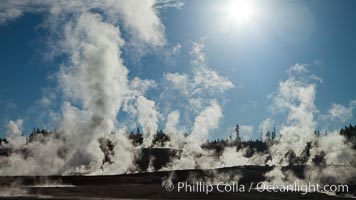
Steam rises at sunrise in Norris Geyser Basin. Located at the intersection of three tectonic faults, Norris Geyser Basin is the hottest and most active geothermal area in Yellowstone National Park.
Location: Norris Geyser Basin, Yellowstone National Park, Wyoming
Image ID: 26943
Location: Norris Geyser Basin, Yellowstone National Park, Wyoming
Image ID: 26943
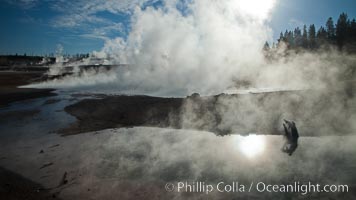
Steam rises at sunrise in Norris Geyser Basin. Located at the intersection of three tectonic faults, Norris Geyser Basin is the hottest and most active geothermal area in Yellowstone National Park.
Location: Norris Geyser Basin, Yellowstone National Park, Wyoming
Image ID: 26944
Location: Norris Geyser Basin, Yellowstone National Park, Wyoming
Image ID: 26944
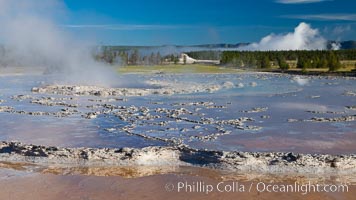
Great Fountain geyser. Great Fountain geyser's large vent (16 feet across) sits amid wide sinter terraces that act as reflecting pools as the geyser slows fills prior to its eruption.
Location: Lower Geyser Basin, Yellowstone National Park, Wyoming
Image ID: 26948
Location: Lower Geyser Basin, Yellowstone National Park, Wyoming
Image ID: 26948
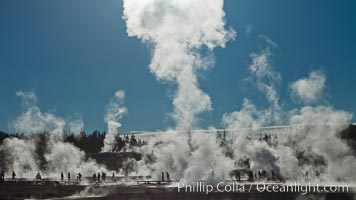
Steam rises at sunrise in Norris Geyser Basin. Located at the intersection of three tectonic faults, Norris Geyser Basin is the hottest and most active geothermal area in Yellowstone National Park.
Location: Norris Geyser Basin, Yellowstone National Park, Wyoming
Image ID: 26951
Location: Norris Geyser Basin, Yellowstone National Park, Wyoming
Image ID: 26951
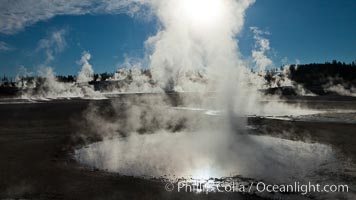
Steam rises at sunrise in Norris Geyser Basin. Located at the intersection of three tectonic faults, Norris Geyser Basin is the hottest and most active geothermal area in Yellowstone National Park.
Location: Norris Geyser Basin, Yellowstone National Park, Wyoming
Image ID: 26952
Location: Norris Geyser Basin, Yellowstone National Park, Wyoming
Image ID: 26952
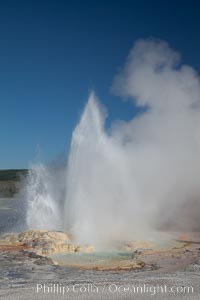
Clepsydra Geyser, a geyser which is almost continually erupting. A member of the Fountain Group of geothermal features.
Location: Lower Geyser Basin, Yellowstone National Park, Wyoming
Image ID: 26961
Location: Lower Geyser Basin, Yellowstone National Park, Wyoming
Image ID: 26961
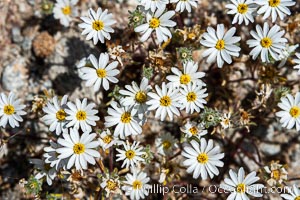
Desert star in spring bloom, a member of the sunflower family found in lower elevations of the Sonoran desert. Heavy winter rains led to a historic springtime bloom in 2005, carpeting the entire desert in vegetation and color for months.
Species: Desert star, Monoptilon bellioides
Location: Anza-Borrego Desert State Park, Borrego Springs, California
Image ID: 10939
Species: Desert star, Monoptilon bellioides
Location: Anza-Borrego Desert State Park, Borrego Springs, California
Image ID: 10939
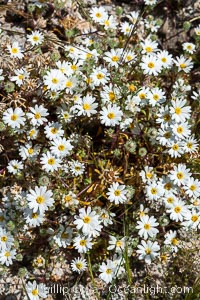
Desert star in spring bloom, a member of the sunflower family found in lower elevations of the Sonoran desert. Heavy winter rains led to a historic springtime bloom in 2005, carpeting the entire desert in vegetation and color for months.
Species: Desert star, Monoptilon bellioides
Location: Anza-Borrego Desert State Park, Borrego Springs, California
Image ID: 10941
Species: Desert star, Monoptilon bellioides
Location: Anza-Borrego Desert State Park, Borrego Springs, California
Image ID: 10941
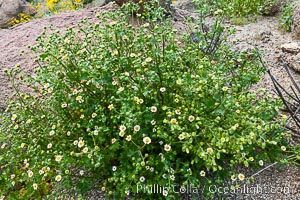
Rock daisy in spring bloom, Glorietta Canyon. Heavy winter rains led to a historic springtime bloom in 2005, carpeting the entire desert in vegetation and color for months.
Species: Rock daisy, Perityle emoryi
Location: Anza-Borrego Desert State Park, Borrego Springs, California
Image ID: 10956
Species: Rock daisy, Perityle emoryi
Location: Anza-Borrego Desert State Park, Borrego Springs, California
Image ID: 10956
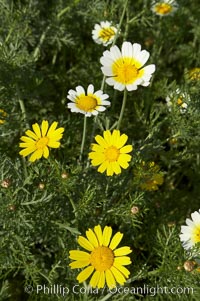
Crown daisy blooms in Spring.
Species: Crown daisy, Chrysanthemum coronarium
Location: San Diego, California
Image ID: 11364
Species: Crown daisy, Chrysanthemum coronarium
Location: San Diego, California
Image ID: 11364
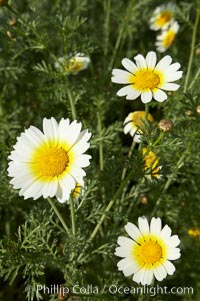
Crown daisy blooms in Spring.
Species: Crown daisy, Chrysanthemum coronarium
Location: San Diego, California
Image ID: 11365
Species: Crown daisy, Chrysanthemum coronarium
Location: San Diego, California
Image ID: 11365
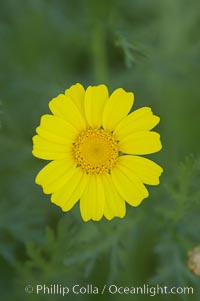
Crown daisy blooms in Spring.
Species: Crown daisy, Chrysanthemum coronarium
Location: San Diego, California
Image ID: 11366
Species: Crown daisy, Chrysanthemum coronarium
Location: San Diego, California
Image ID: 11366
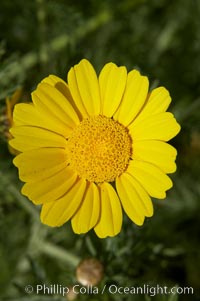
Crown daisy blooms in Spring.
Species: Crown daisy, Chrysanthemum coronarium
Location: San Diego, California
Image ID: 11368
Species: Crown daisy, Chrysanthemum coronarium
Location: San Diego, California
Image ID: 11368
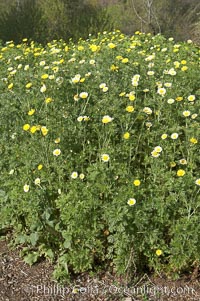
Crown daisy blooms in Spring.
Species: Crown daisy, Chrysanthemum coronarium
Location: San Diego, California
Image ID: 11369
Species: Crown daisy, Chrysanthemum coronarium
Location: San Diego, California
Image ID: 11369
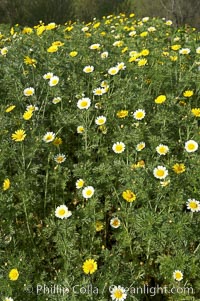
Crown daisy blooms in Spring.
Species: Crown daisy, Chrysanthemum coronarium
Location: San Diego, California
Image ID: 11370
Species: Crown daisy, Chrysanthemum coronarium
Location: San Diego, California
Image ID: 11370